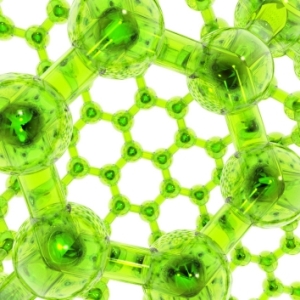Aug 7 2013
The National Science Foundation (NSF) has awarded New York University researchers and their colleagues at the California Institute of Technology (Caltech) a $2 million grant to develop cutting-edge nanomaterials that hold promise for improving the manufacturing of advanced materials, biofuels, and other industrial products.
 The National Science Foundation has awarded NYU researchers and their colleagues at Caltech a $2 million grant to develop cutting-edge nanomaterials that hold promise for improving the manufacturing of advanced materials, biofuels, and other industrial products. ©iStockPhoto.com/Shunyu Fan
The National Science Foundation has awarded NYU researchers and their colleagues at Caltech a $2 million grant to develop cutting-edge nanomaterials that hold promise for improving the manufacturing of advanced materials, biofuels, and other industrial products. ©iStockPhoto.com/Shunyu Fan
Under the grant, the scientists will develop biomimetic materials with revolutionary properties—these molecules will self-replicate, evolve, and adopt three-dimensional structures a billionth of a meter in size by combining DNA-guided self-assembly with the centuries-old art of origami folding.
The four-year grant is part of the NSF’s Origami Design for Integration of Self-assembling Systems for Engineering Innovation (ODISSEI) program and includes NYU Chemistry Professors Nadrian Seeman and James Canary and NYU Physics Professor Paul Chaikin. They will team up with Caltech’s William A. Goddard, III and Si-ping Han.
Others involved in the project are molecular biologists John Rossi and Lisa Scherer of City of Hope Medical Center and mathematicians Joanna Ellis-Monaghan and Greta Pangborn of Saint Michael’s College in Vermont.
The work will build upon recent breakthroughs in the field of structural DNA nanotechnology, which Seeman founded more than three decades ago and is now pursued by laboratories across the globe. His creations allow him to arrange pieces and form specific molecules with precision—similar to the way a robotic automobile factory can be told what kind of car to make.
Previously, Seeman has created three-dimensional DNA structures, a scientific advance bridging the molecular world to the world where we live. To do this, he and his colleagues created DNA crystals by making synthetic sequences of DNA that have the ability to self-assemble into a series of 3D triangle-like motifs. The creation of the crystals was dependent on putting “sticky ends”—small cohesive sequences on each end of the motif—that attach to other molecules and place them in a set order and orientation. The make-up of these sticky ends allows the motifs to attach to each other in a programmed fashion.
Recently, the Seeman and Chaikin labs teamed up to develop artificial structures that can self-replicate, a process that has the potential to yield new types of materials. In the natural world, self-replication is ubiquitous in all living entities, but artificial self-replication had previously been elusive. Their work marked the first steps toward a general process for self-replication of a wide variety of arbitrarily designed “seeds”. The seeds are made from DNA tile motifs that serve as letters arranged to spell out a particular word. The replication process preserves the letter sequence and the shape of the seed and hence the information required to produce further generations. Self-replication enables the evolution of molecules to optimize particular properties via selection processes.
Under the NSF grant, the researchers will aim to take these innovations to the next level: the creation of self-replicating 3D arrays. To do so, the collaborators will aim to fold replicating 1D and 2D arrays into 3D shapes in a manner similar to paper origami—a complex and delicate process.
In meeting this challenge, they will adopt tools from graph theory and origami mathematics to develop algorithms to direct self-assembling DNA nanostructures and their origami folds. The mathematical component of the endeavor will be supplemented by the artistic expertise of Portland, Ore.-based sculptor Julian Voss-Andreae, who will advise the team on issues related to design and will use his skills to develop life-size physical models of the nanoscopic structures the scientists are seeking to build.
The program officer at NSF responsible for monitoring this Emerging Frontiers in Research and Innovation (EFRI) project is Paul Collopy.